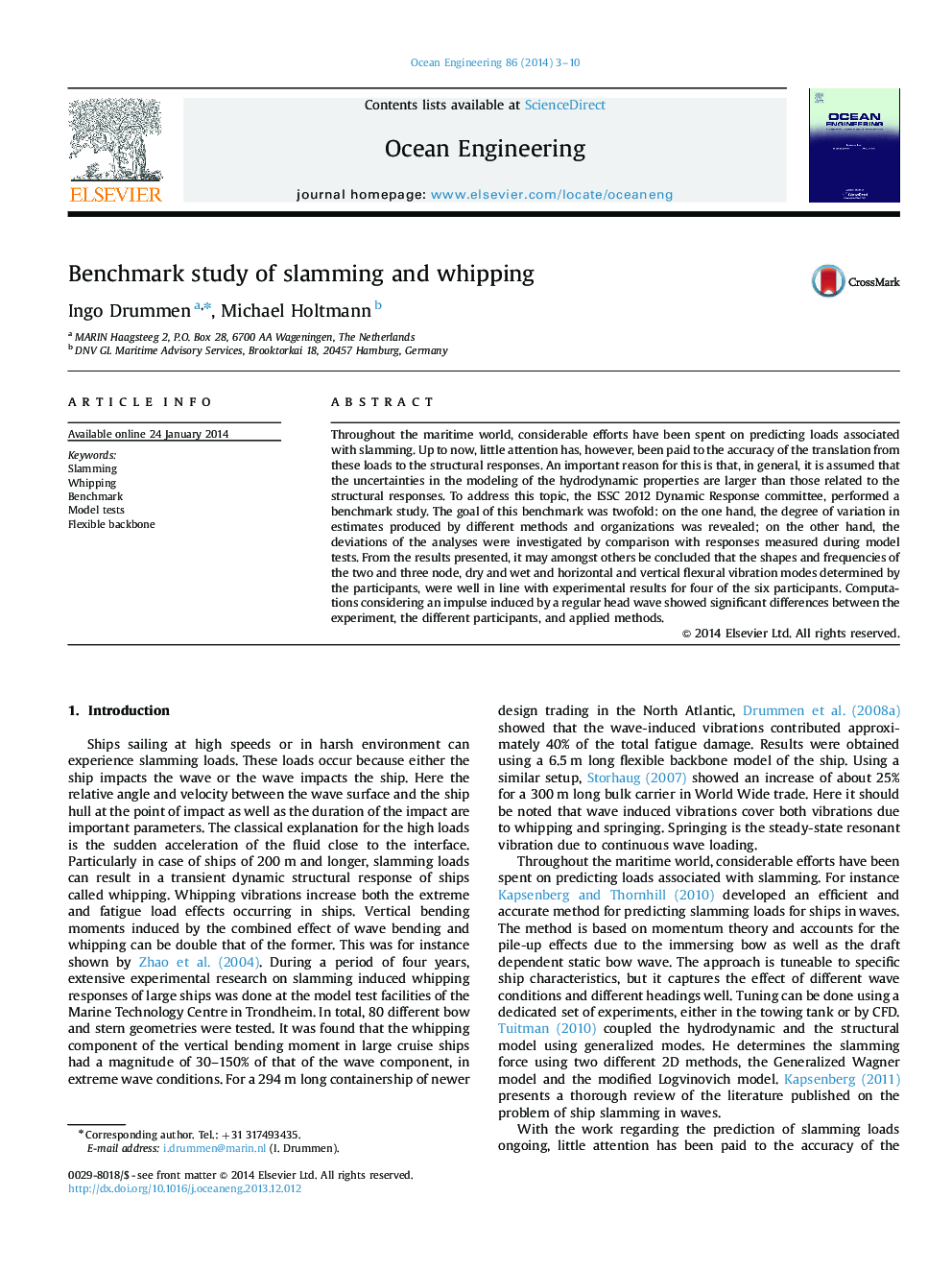| Article ID | Journal | Published Year | Pages | File Type |
|---|---|---|---|---|
| 1725671 | Ocean Engineering | 2014 | 8 Pages |
•Results from an international benchmark on the topic of slamming and whipping•Significant differences between modal parameters.•Significant differences between responses to an (theoretical and measured) impulse.•Differences between participants also related to their experience.•More complex methods do not necessarily provide better results.
Throughout the maritime world, considerable efforts have been spent on predicting loads associated with slamming. Up to now, little attention has, however, been paid to the accuracy of the translation from these loads to the structural responses. An important reason for this is that, in general, it is assumed that the uncertainties in the modeling of the hydrodynamic properties are larger than those related to the structural responses. To address this topic, the ISSC 2012 Dynamic Response committee, performed a benchmark study. The goal of this benchmark was twofold: on the one hand, the degree of variation in estimates produced by different methods and organizations was revealed; on the other hand, the deviations of the analyses were investigated by comparison with responses measured during model tests. From the results presented, it may amongst others be concluded that the shapes and frequencies of the two and three node, dry and wet and horizontal and vertical flexural vibration modes determined by the participants, were well in line with experimental results for four of the six participants. Computations considering an impulse induced by a regular head wave showed significant differences between the experiment, the different participants, and applied methods.
